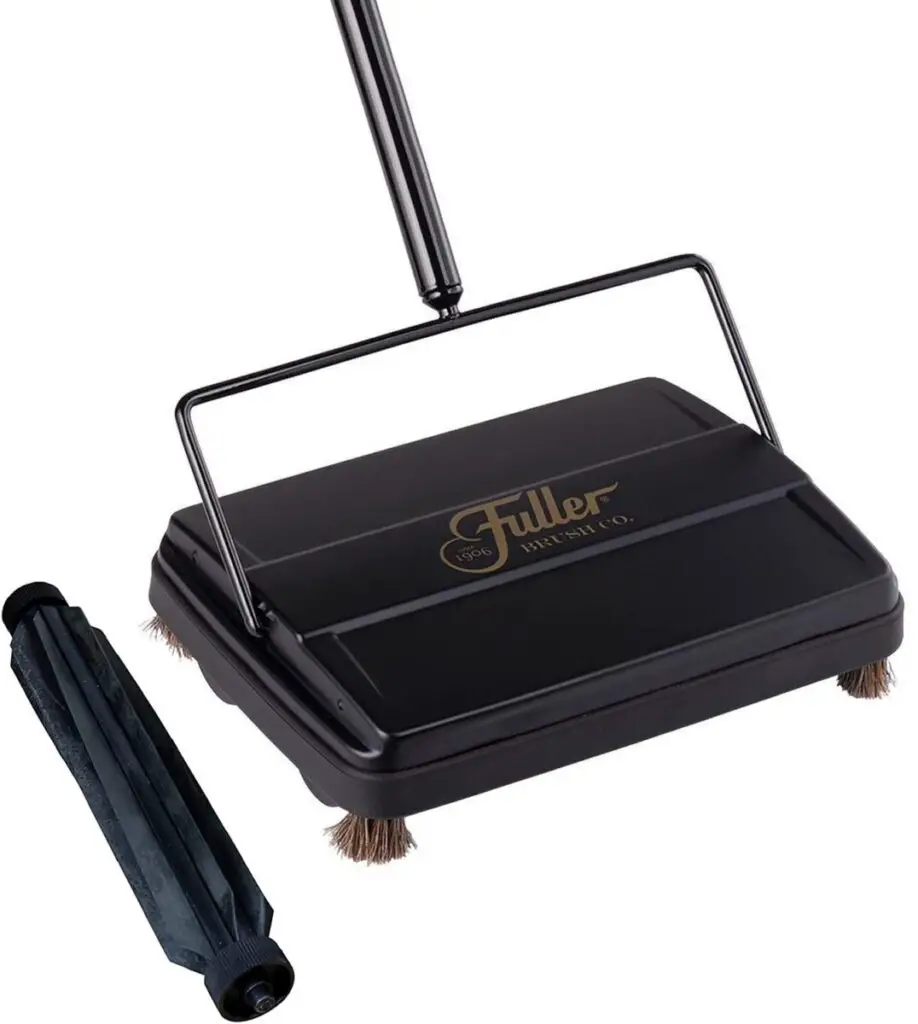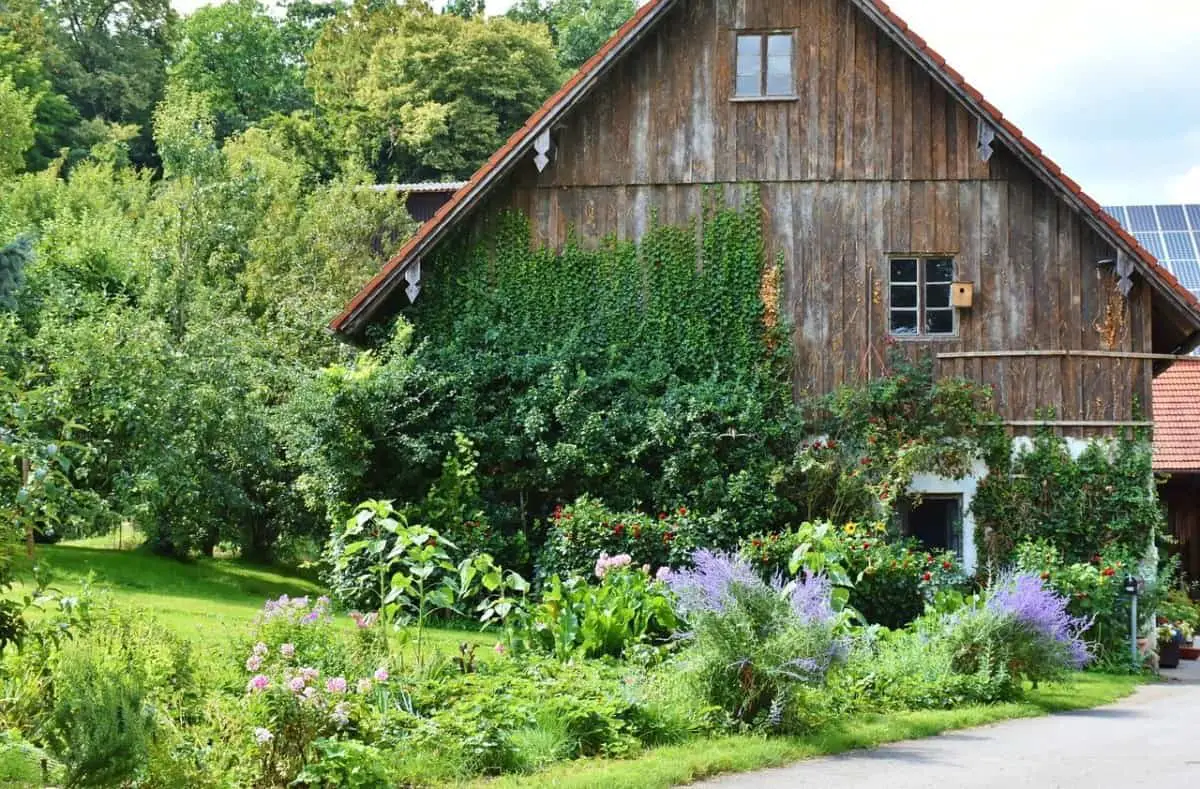Off-Grid Vs. Homestead: What Are The Main Differences?
Being more self-sufficient and self-reliant has become increasingly popular over the last few years. With so much uncertainty and many factors that influence various supply chains, the idea of homesteading and living off-grid has found renewed interest.
The main difference in homesteading and living off-grid is access to certain key utilities. While both include aspects of self-sufficiency, living off the grid means that you are not connected to the power grid or using city water or sewage. When homesteading, you can use those public utilities.
Traditional homesteads are on many acres of land, away from towns and cities. However, with the new-found interest in live self-sustainable living, modern homesteading has become more of a culture than a location.
Table of Contents
Off-Grid Vs. Homestead

“Homesteading,” or life on a homestead, is all about self-sufficiency. What makes homesteading different from a farm is that homesteading is not about profiting from their crops and livestock. While some homesteaders may use their gardens and livestock as a small source of income, the immediate goal of homesteading is to provide and sustain the homesteader and their family.
Homesteaders are homeowners and property owners that live sustainably with a focus on less waste, less consumption, and a simpler way of life. While not all homesteaders live off the grid, almost all off-grid living is homesteading. While homesteading seeks to not rely on society for food and other supply needs, off-grid living goes one step further.
Living “off-grid” is not just about being self-sufficient, but it is also about living entirely autonomously. The grid that “off-grid” is referring to is being connected to a utility for power. These utilities also include water and natural gas. This is the main difference between homesteads and off-grid living.
Related reading: How to keep chickens.
Living Off-Grid
Off-grid living refers to people who have chosen to live without connections to public or municipal utilities. These can be full-time homesteads in which a family self sustains their needs for food and supplies or even a simple dry-cabin used as a hunting or vacation home.
In general, living off the grid means living without-
- The primary, organized power grid – your source of electricity, if you have one is self-generated, such as wind, water, or solar energy.
- Municipal water – your home isn’t connected to the town or city water; off grid homesteads rely on wells or other off-grid water sources
- Sewer Services – instead of a sewer, off-grid homesteaders use either a septic tank, outhouse, or composting off-grid toilet
- Natural gas – no natural gas, but no natural gas bills either
From: www.anoffgridlife.com
In the absence of these utilities, someone living off the grid may have a well dug on their property for water, they may use an outhouse or a compost toilet instead of the plumbing and electricity needed for traditional toilets.
If you decide to live off the grid, you may need to build a homestead to provide food, shelter, and everything else you would need to sustain you and your family. As with any lifestyle choice, there are many ways to live off the grid.
The most common off-grid homesteads are:
- Roughing it – living true to what it means to be disconnected from public and municipal utility services. These off-grid homesteaders generally build their homestead without electricity, running water, and plumbing.
- Half-on/ Half-off – some homesteaders decide to ease into off-grid living, or for personal and familial needs, cannot cut themselves entirely off the grid. These homesteaders use as little as they can and live a lifestyle that is not as reliant on the power grid. For example, they may only use electricity at night, and very little at that.
- Modern off-grid – while upfront, this is a more expensive undertaking, modern off-grid living involves planning, building, and installing off-grid options for the utilities they are going without. These homesteaders, for example, will have a well and well pump, a septic system, and an off-grid electrical solution installed on their homestead. This way, they can enjoy the luxuries of these utilities while maintaining their autonomy.
As with any lifestyle choice, there is no one way to live off-grid, and many families choose different ways to achieve their grid-free goals.
Related reading: How much land do you need to be self-sufficient?
Types of Homesteads

A homestead, by definition, is “any dwelling with its land and buildings where a family makes its home.” However, the idea of homesteading has grown to include specifically homes where families live and work together, and more importantly, strive to live a more self-sufficient life where they are less reliant on society as a whole.
When you think of a homestead, you may initially picture a home on a ton of land with extensive vegetable gardens and livestock. However, more and more homesteading has become a lifestyle more than a location. With more and more people taking on the “homestead” way of life, there are a few different types of homesteads popping up.
Apartment Homesteads
Many apartment dwellers desire to live more self-sufficiently, to save money, and to become more self-reliant. An apartment homestead can include potted herbs and vegetables growing on shelves and in windows, making all their own cleaning supplies, and mending and reusing old clothing and other household items.
Apartment homesteaders can find and build relationships with local farmers and other homesteaders that grow livestock and work out barter arrangements and agreements. What they may lack in space, apartment homesteaders make up for with ingenuity.
Urban Homesteads
Urban homesteads have become incredibly popular over the last few years. These are residential homes in a city or suburb in which homeowners are using their property to assist in a self-sufficient lifestyle. They practice gardening and traditional food storage methods, raise small livestock such as chickens, rabbits, or goats, extensive recycling, and generally a much simpler style of living.
An urban homesteader transforms their property for the maximum production of food and resources for their family. Popular books and plans are sold to demonstrate sustainability on as little as a quarter of an acre. The rise of urban homesteads has really brought homesteading into the mainstream consciousness.
Traditional Homesteads
A traditional homestead is most often the one that gets confused with living off the grid. Traditional homesteads are generally many acres of land set off from main towns, roads, and cities.
Many traditional homesteads include various livestock such as chickens, goats, pigs, rabbits, and even cows. They make use of their available land to grow their own food and practice many different food storage solutions such as canning, dehydrating, and freezing.
On a traditional homestead, there is an emphasis on making your own. Homesteaders will make all their own cleaning supplies and most foods from scratch, including things like bread and pasta.
Self-Sustainability On Homesteads And Off-Grid Living
Overall, the key difference between living on a homestead and living off-grid is simply the access or hook-up to public and town utilities. Successfully living off-grid requires homesteading, while you do not need to live off-grid to homestead.
The core goal in both lifestyle choices is to rely less on society and the government to support you and your families’ needs. Every homesteader or family living off-grid has their own motivations for their choices. Some are motivated by saving money, others are motivated by their health, while many homesteaders believe in the positive impact self-sustainability has on the environment.
Becoming more self-sufficient in today’s world is slowly becoming a goal for many more people. While going off-grid may feel extreme, homesteading can be done virtually anywhere. Starting small is a great way to try out this way of life and find out if homesteading may be right for you.
Check out my recommendations for equipment that will help you take your home off-grid.
My Off-Grid Product Recommendations

Useful Book: Off Grid Living 2022-2021 – This incredible step by step guide is a great read and gives you useful information about reaching self-sufficiency in just 30 days. Get the paperback on Amazon or read it free with a Kindle Unlimited subscription or listen to the audio version with Audible Plus membership.

Small Solar Panel Systems: Silicon Solar – This is an excellent company that offers lots of products to get you started on your solar journey. Visit Silicon Solar.

Family Water Filter: Big Berkey – For a fast, affordable water filter with no plumbing required, you can’t beat a Big Berkey gravity-fed filter like this one from Amazon.

Canning Equipment – This canning starter kit, 22-quart Barton pressure canner and twelve-pack of Ball 16oz mason jars will help you preserve food as you work towards self-sufficiency.

Cleaning: Fuller Carpet Sweeper –. This carpet sweeper is an ideal way to keep your home clean without using up your energy stores on vacuuming.

Handy Knife: Gerber Serrated Paraframe – This handy all-purpose knife is lightweight and ideal for all those little jobs around your home and garden.








